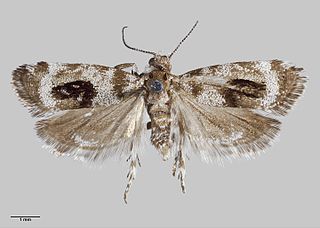
Asterivora inspoliata is a species of moth in the family Choreutidae. It is endemic to New Zealand and has been found in the southern parts of the South Island. Adults are on the wing in December and January.
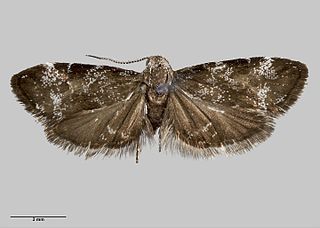
Asterivora tristis is a species of moth in the family Choreutidae. It is endemic to New Zealand and has been observed in Tongariro National Park. Adults of this species are on the wing in January.
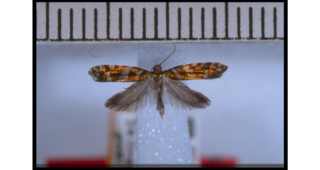
Chrysorthenches argentea is a species of moth in the family Plutellidae. It was described by John S. Dugdale in 1996. It is endemic to New Zealand and has been observed in the Buller District and at the West Coast.

Trachypepla semilauta is a moth of the family Oecophoridae and was first described by Alfred Philpott in 1918. It is endemic to New Zealand and has been collected in Southland. This species inhabits southern beech forest on the side of mountains. Adults are on the wing in January.
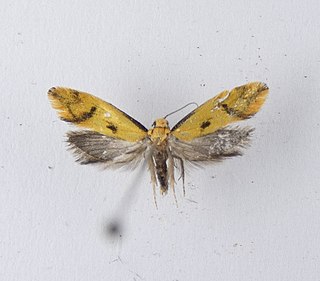
Tingena actinias is a species of moth in the family Oecophoridae. It is endemic to New Zealand and is found on the North and South Islands. The larvae of this species are leaf litter feeders. The preferred habitat of this species is shrubland and it has also been observed in gumland heaths and in beech forest.

Tingena crotala is a species of moth in the family Oecophoridae. It is endemic to New Zealand and is found both in the North and South Islands. This species inhabits native forest and is on the wing in November and December.
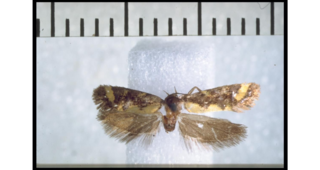
Tingena honorata is a species of moth in the family Oecophoridae. It is endemic to New Zealand and has been observed in the South Island including in Fiordland, Southland and Otago. This species has inhabits damp openings in native forest. The adults of this species are on the wing in December and January and are attracted to light.
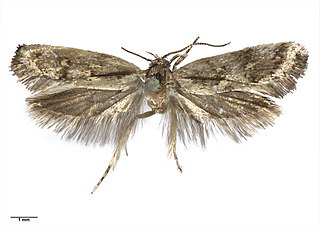
Tingena lassa is a species of moth in the family Oecophoridae. It is endemic to New Zealand and has been observed in Otago. It frequents both subalpine habitat at altitudes up to 1100 meters down to sea level residential areas. This species has frequently been observed resting on rock faces. The adults of this species are found on the wing in November and December.
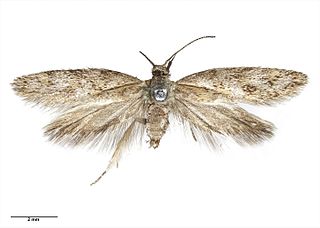
Tingena levicula is a species of moth in the family Oecophoridae. It is endemic to New Zealand.

Tingena morosa is a species of moth in the family Oecophoridae. It is endemic to New Zealand and has been found in the South Island in Nelson including at the Dun Mountain and in the Canterbury region. This species inhabits native forest at altitudes from 2000 to 3000 ft. Adults of this species are on the wing in December.

Tingena penthalea is a species of moth in the family Oecophoridae. It is endemic to New Zealand and has been observed in Wellington and the Tararua Range. The adults of this species are on the wing from December until February.

Tingena pronephela is a species of moth in the family Oecophoridae. It is endemic to New Zealand and is found in the southern parts of the South Island. The species inhabits the outskirts of scrub and native forest. The adults of this species are on the wing from October to February.

Tingena seclusa is a species of moth in the family Oecophoridae. It is endemic to New Zealand and has been observed in the Canterbury and Otago regions. The larvae of this species are litter leaf feeders and the adults of this species are on the wing from December to February.

Tingena xanthodesma is a species of moth in the family Oecophoridae. It is endemic to New Zealand and has been observed in Southland, the Otago region, and on Kapiti Island. This species inhabits native forest and is on the wing from November to February.

Trachypepla ingenua is a moth of the family Oecophoridae first described by Edward Meyrick in 1911. It is endemic to New Zealand and has been collected in both the North and South Islands. This species is one of the larger in the genus Trachypepla and the colouration of the adults imitates bird droppings. The preferred habitat of T. ingenua is native forest and adults are on the wing from December to February.
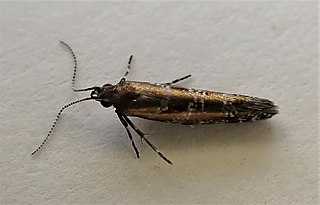
Chrysorthenches drosochalca is a species of moth in the family Plutellidae first described by Edward Meyrick in 1905. It is endemic to New Zealand and has been found in the North and South Islands. The larvae are leaf miners of Prumnopitys ferruginea. Adults are on the wing from January to March.
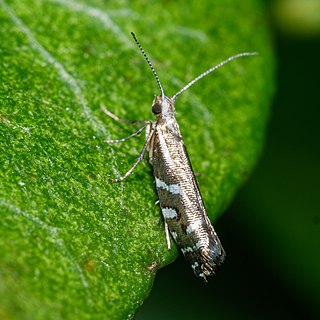
Chrysorthenches glypharcha is a species of moth in the family Plutellidae. It was first described by Edward Meyrick in 1919. It is endemic to New Zealand and is found in the North and South Islands. This species inhabits native forest with Podocarpus trees present. The larva and pupa of this species is currently unknown but the adults are on the wing in February, October and November. The adult moths are associated with Podocarpus totara and Podocarpus laetus.

Chrysorthenches halocarpi is a species of moth in the family Plutellidae. It was first described by John S. Dugdale in 1996. It is endemic to New Zealand and has been observed in the North and South Islands. The species inhabits native bush. Larvae have been collected in October and November. The larval hosts are Halocarpus bidwillii and H. biformis. Adults have been observed on the wing from November to February.

Chrysorthenches phyllocladi is a species of moth in the family Plutellidae. It was first described by John S. Dugdale in 1996. It is endemic to New Zealand and has been observed in both the North and South Islands. The larvae of this species feed on Phyllocladus alpinus. Adults have been observed on the wing in February, April and November.

Chrysorthenches is a genus of moths of the family Plutellidae.






















